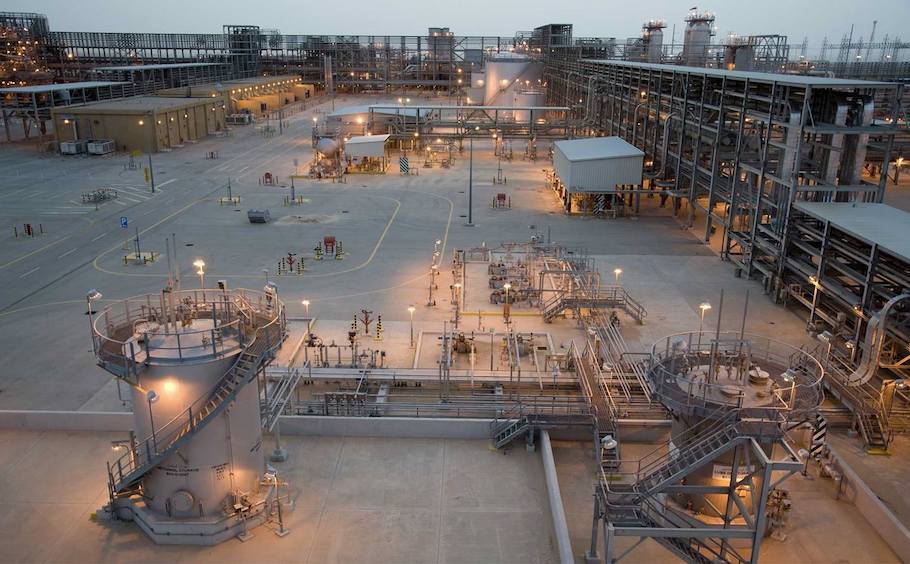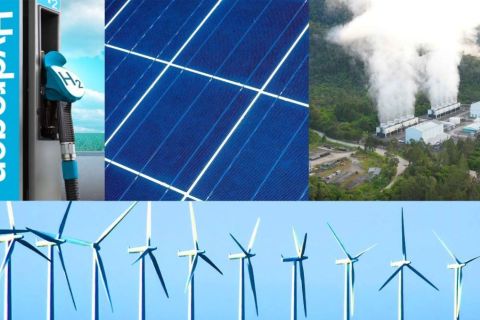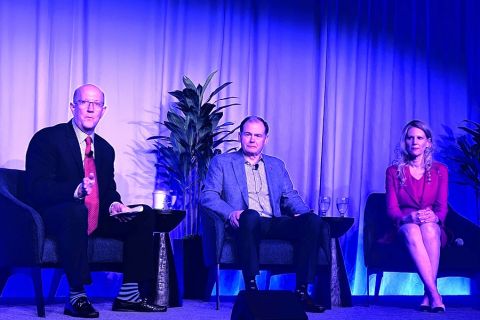Presented by:

Editor's note: This column appears in the new E&P newsletter. Subscribe to the newsletter here.
The impact of climate change is forcing the world to consider the use of fossil fuels and implement technologies that either reduce carbon emissions or remove them from the atmosphere. A monumental shift in energy usage is underway in the great energy transition. Ambitious goals of net-zero carbon emissions targets are being set by companies, countries and nations over the next several decades. A robust holistic approach is needed to achieve these goals, including a balanced energy portfolio that includes the continuing use of fossil fuels, alternate energy sources (e.g., renewables and nuclear), hydrogen, and carbon capture, utilization and storage (CCUS).
Circular carbon economy
One way to achieve the global energy transition is to adopt the circular carbon economy, which is a holistic approach to manage and reduce greenhouse-gas emissions. It was recently endorsed by the G20 Energy Ministers as a framework for managing and reducing emissions. It is a closed-loop system involving the 4Rs: reduce, reuse, recycle and remove.
(Source: Saudi Aramco)
In the reduce part, fossil fuels can be substituted by renewables as well as alternate forms of energy like hydro, nuclear and bioenergy.
Another low-hanging fruit is to improve efficiency of processes. Under reuse and recycle, CO2 can be converted into fuels, bio-energy and chemicals, and it can be used for building materials such as cement.

The fourth way to reduce CO2 emissions is to directly remove it from the atmosphere. These processes will include exploiting photosynthesis by planting trees and mangroves as well as harvesting algae. The most important way to remove CO2 (at least in terms of quantities involved) is through carbon capture and storage (CCS) . This includes the traditional CCS and also direct air capture. Once captured, the CO2 is put back into the reservoirs where it came from in the first place!
CCUS
By far, the most important way to reduce CO2 emissions is through CCUS or its storage in underground reservoirs and aquifers. CCUS has been developed to commercial stage with 60-plus large-scale facilities at various stages of development, including 20-plus in operation around the world capturing and storing about 40-plus million metric tons of CO2 per year.
The current state of CCUS deployment is well below where it needs to be despite significant technology advancement. Innovative breakthroughs in capture and utilization technologies are key drivers for overcoming the cost and performance barriers for CCUS deployment at a scale for deeper emissions reduction consistent with the industry's ambitious climate goals.
In addition, in the absence of the “U” in CCUS, government incentives or a carbon tax will be needed to overcome the large costs involved in the storage of CO2. One example is the 45Q program adopted by the Department of Energy in the U.S.


Hydrogen economy
Ultimately, over the longer term, hydrocarbons have to be replaced by a sustainable form of energy. One such option is hydrogen. It has many advantages including a clean form of energy (produces only water when it burns), and it is carbon-free. However, there are a number of disadvantages, including costs, infrastructure, storage and safety issues. The use of hydrogen will increase steadily in the coming decades, and many companies and countries have started planning and allocating budgets for an inevitable hydrogen economy.
The hydrogen may be “green” hydrogen, which comes from renewables through electrolysis of water, or “blue” hydrogen by reforming the natural gas with CO2 storage option. Gray or black hydrogen is produced from natural gas without the CO2 storage option.
In any of these options, large quantities of hydrogen will be produced, and one of the challenges that will need to be addressed is its storage. The aquifers and reservoirs will act as a temporary storage for hydrogen that can be produced during high-demand times to produce electricity.
Next phase of energy transition
The oil and gas industry is uniquely positioned to drive energy efficiency and reduce emissions by implementing a range of high-impact circular carbon economy initiatives. It will play an important role with the unique skill sets and know-how it has developed over the past hundred years. These include the industry knowledge of managing subterranean hydrocarbon reservoirs as well as operating complex processes and facilities. These can be utilized to address the unique challenges needed for the next phase of energy transition, including CCUS; subsurface monitoring and surveillance; emerging technologies such as geothermal energy; and a future hydrogen economy.
About the authors:
Dr. Abdulaziz Al-Qasim is the champion of CCUS/EOR with Saudi Aramco and also one of this year's E&P 40 Under Forty recipients.
Dr. Sunil Kokal is a principal consultant with Saudi Aramco.
RELATED CONTENT:
June 24, 2021: API Sets Greenhouse Gas Disclosure Guidelines for Oil Industry
June 18, 2021: Opinion: The Energy Transition Needs Astute Energy Policy
June 17, 2021: Why Carbon Capture is Critical for US Oil
June 15, 2021: Big Oil’s Net-Zero Goal: Myths and Realities
May 20, 2021: Oil and Gas Safety in the Energy Transition
April 15, 2021: Can the World Reach Net-Zero Emissions by 2050?
April 14, 2021: TGS CEO Kristian Johansen Talks Energy Transition
ENERGY ESG CONFERENCE:
What types of capital have moved into the “must ESG” column?
What challenges face companies adopting more sustainable practices?
Register for Hart Energy's free Energy ESG virtual conference here.
Recommended Reading
Energy Transition in Motion (Week of Jan. 26, 2024)
2024-01-26 - Here is a look at some of this week’s renewable energy news, including NextEra Energy’s growing renewable energy backlog.
Element3 Extracts Lithium from Permian’s Double Eagle Wastewater
2024-01-30 - The field test was conducted with wastewater from a subsidiary of Double Eagle Energy Holdings’ produced water recycling facility.
Energy Transition in Motion (Week of Feb. 9, 2024)
2024-02-09 - Here is a look at some of this week’s renewable energy news, including the latest on a direct lithium extraction technology test involving one of the world’s biggest lithium producers and the company behind the technology.
Occidental’s Lithium Technology ‘Ready for Prime Time’
2024-03-20 - Occidental is leaning towards a ‘build, own and operate’ approach to growing its direct lithium extraction business.
Energy Transition in Motion (Week of Feb. 16, 2024)
2024-02-16 - Here is a look at some of this week’s renewable energy news, including the outlook for solar and battery storage in the U.S.





